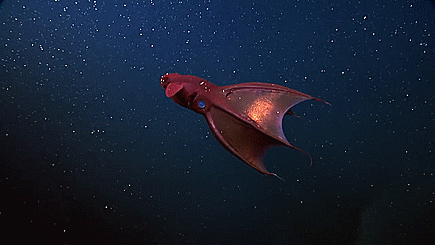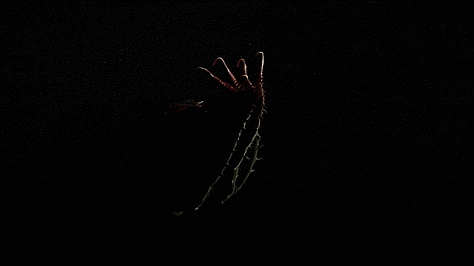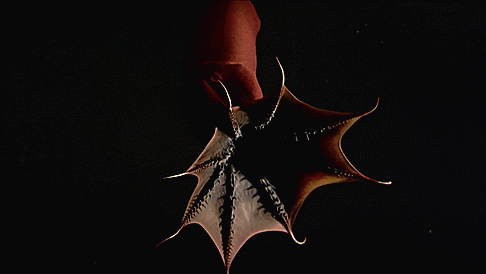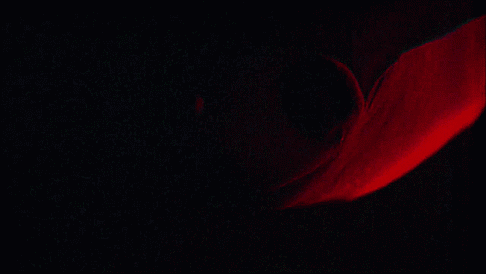astronomyblog:The vampire squid (Vampyroteuthis infernalis, lit. “vampire squid from Hell”) is a sma
astronomyblog:The vampire squid (Vampyroteuthis infernalis, lit. “vampire squid from Hell”) is a small cephalopod found throughout temperate and tropical oceans in extreme deep sea conditions. Unique retractile sensory filaments justify the vampire squid’s placement in its own order, Vampyromorphida, as it shares similarities with both octopuses and squid. The vampire squid can reach a maximum total length around 30 cm. Its 15-cm gelatinous body varies in colour from velvety jet-black to pale reddish, depending on location and lighting conditions. A webbing of skin connects its eight arms, each lined with rows of fleshy spines or cirri; the inner side of this “cloak” is black. Only the distal halves (farthest from the body) of the arms have suckers. The vampire squid is almost entirely covered in light-producing organs called photophores, capable of producing disorienting flashes of light ranging in duration from fractions of a second to several minutes. The intensity and size of the photophores can also be modulated. Appearing as small, white discs, the photophores are larger and more complex at the tips of the arms and at the base of the two fins, but are absent from the undersides of the caped arms. Two larger, white areas on top of the head were initially believed to also be photophores, but are now identified as photoreceptors.sourcevideo 1, video 2 -- source link
Tumblr Blog : wonders-of-the-cosmos.tumblr.com
#deep sea




